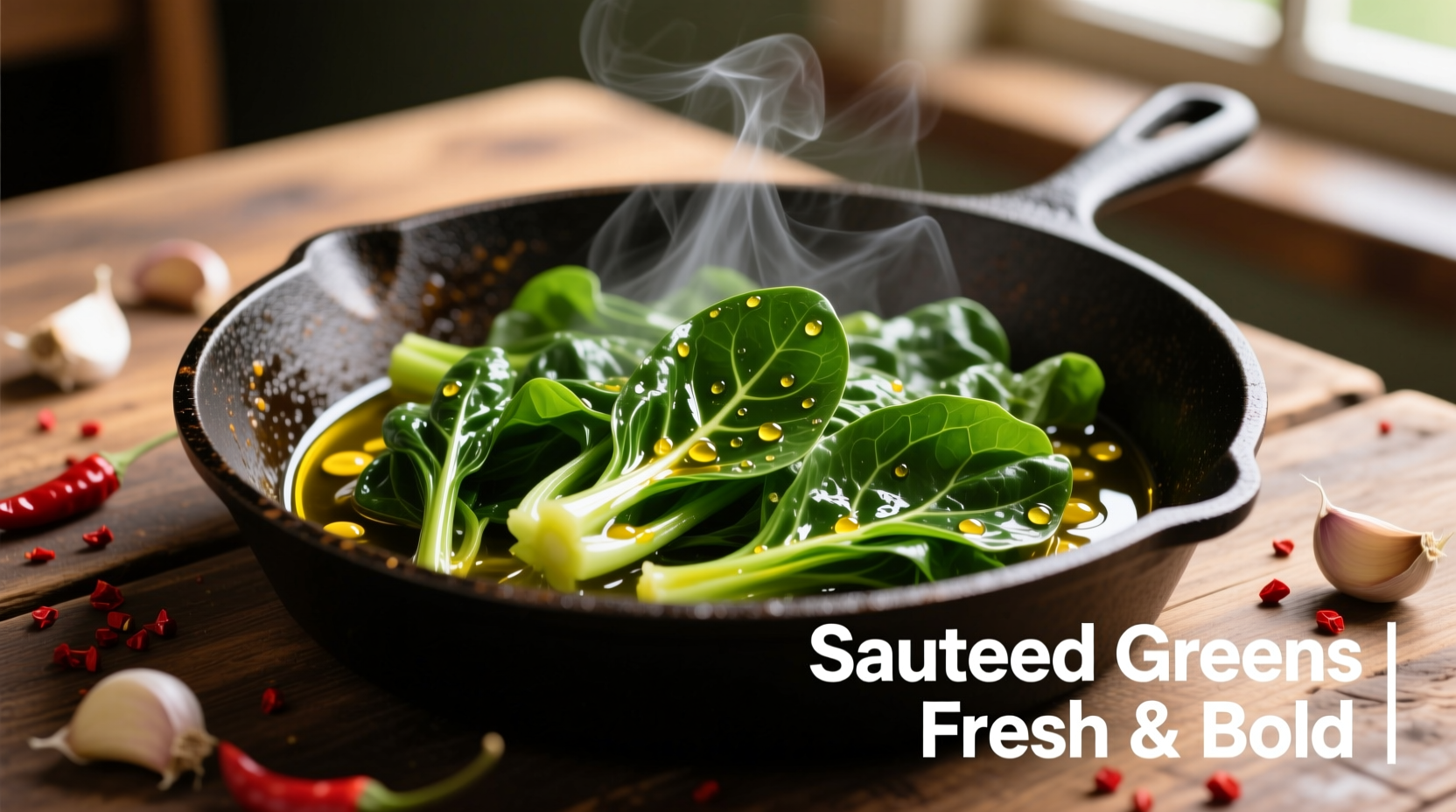The best way to cook mustard greens starts with proper preparation: wash thoroughly, remove tough stems, and chop leaves. For optimal flavor and texture, sauté chopped greens with garlic and olive oil for 5-7 minutes until tender but still vibrant. Add a splash of vinegar or lemon juice at the end to balance the bitterness. This simple method preserves nutrients while enhancing natural flavors.
Mustard greens pack a peppery punch that transforms beautifully with the right cooking technique. Whether you're harvesting from your garden or buying them at the farmers' market, knowing how to prepare these nutrient-dense leafy greens makes all the difference between a bitter disappointment and a flavorful side dish that complements any meal.
Why Mustard Greens Deserve a Spot on Your Menu
Beyond their distinctive spicy flavor, mustard greens offer impressive nutritional benefits. Just one cup of cooked mustard greens delivers more than your daily requirement of vitamins K and A, plus substantial amounts of vitamin C, calcium, and fiber. Their unique phytonutrients may support heart health and reduce inflammation, making them a powerhouse addition to your diet.
Understanding Mustard Greens Varieties
Before you start cooking, recognize which type you're working with. Curly mustard greens have ruffled edges and a stronger bite, while flat-leaf varieties like Tatsoi offer a milder flavor. Southern-style mustard greens typically feature broad, smooth leaves with moderate heat. Each variety responds slightly differently to cooking methods, so adjust your technique accordingly.
| Cooking Method | Time Required | Flavor Result | Best For |
|---|---|---|---|
| Sautéing | 5-7 minutes | Bright, slightly reduced bitterness | Quick weeknight meals |
| Boiling | 8-10 minutes | Mellow, earthy flavor | Traditional Southern preparations |
| Braising | 20-30 minutes | Rich, complex depth | Cold weather comfort food |
| Steaming | 4-6 minutes | Preserves maximum nutrients | Health-focused meals |
Step-by-Step Preparation Process
Proper preparation prevents sandy leftovers and ensures even cooking. Follow this sequence for perfect results every time:
- Washing: Fill a clean sink or large container with cold water. Submerge greens and swish vigorously to dislodge dirt. Repeat until no grit remains at the bottom.
- Stem Removal: Fold each leaf in half lengthwise and slice off the tough central rib. Save stems for stir-fries—they require slightly longer cooking.
- Chopping: Stack 3-4 leaves, roll tightly, and slice crosswise into 1-inch ribbons for even cooking.
- Drying: Use a salad spinner or pat gently with clean towels. Excess water causes steaming rather than proper sautéing.
Mastering the Cooking Technique
The secret to perfectly cooked mustard greens lies in temperature control and timing. Here's the professional chef approach:
Sautéing Method (5 Minutes)
Heat 1 tablespoon olive oil in a large skillet over medium-high heat. Add 2 minced garlic cloves and sauté for 30 seconds until fragrant but not browned. Add chopped greens in batches, stirring constantly until wilted. Season with salt and finish with 1 teaspoon apple cider vinegar to brighten flavors. This method preserves the greens' vibrant color and nutritional content while reducing bitterness.
Braising Method (25 Minutes)
For traditional Southern-style mustard greens, combine 1 pound prepared greens, 4 cups chicken or vegetable broth, 1 diced onion, and 4 ounces smoked turkey or bacon in a large pot. Bring to a simmer, then reduce heat to low. Cover and cook for 20-25 minutes until tender. Remove lid for the final 5 minutes to reduce liquid. This slow cooking method transforms the sharp bite into complex, savory depth.

Avoiding Common Cooking Mistakes
Even experienced cooks make these errors when preparing mustard greens:
- Insufficient washing: Mustard greens grow close to soil and trap grit between leaves. Always wash thoroughly in multiple changes of water.
- Overcooking: Extended cooking destroys nutrients and creates unpleasantly mushy texture. Remove from heat when greens reach your desired tenderness.
- Skipping acid: A splash of vinegar or lemon juice at the end balances bitterness and enhances flavor complexity.
- Using cold oil: Always heat oil before adding aromatics to properly infuse flavors without burning.
Flavor Pairing Recommendations
Complement mustard greens' peppery profile with these flavor combinations:
- Acidic elements: Apple cider vinegar, lemon juice, or pickled shallots cut through bitterness
- Umami boosters: Smoked paprika, soy sauce, or anchovy paste deepen flavor complexity
- Sweet contrasts: A touch of honey or maple syrup balances sharpness
- Aromatic foundations: Garlic, onions, and shallots build flavor layers
For authentic Southern preparation, add a splash of hot sauce and a dash of red pepper flakes. Asian-inspired versions shine with ginger, sesame oil, and a sprinkle of toasted sesame seeds.
Storage and Reheating Tips
Store cooked mustard greens in an airtight container in the refrigerator for up to 4 days. When reheating, add a small amount of water or broth to refresh moisture. Microwave in 30-second intervals, stirring between each, until heated through. Avoid over-reheating, which can cause unpleasant odors and further nutrient loss.
When to Choose Different Cooking Methods
Your cooking method should match both your available time and desired outcome. Sautéing works best when you want to preserve maximum nutrients and enjoy a brighter flavor profile with some texture remaining. This approach suits weeknight dinners when time matters. Braising shines during colder months when you want a heartier side dish with deeper flavors that complement roasted meats. Steaming proves ideal when nutritional content takes priority over complex flavor development.











 浙公网安备
33010002000092号
浙公网安备
33010002000092号 浙B2-20120091-4
浙B2-20120091-4